Why are we still so obsessed with the Nazis? Hardly a day goes by without a television programme or a newspaper article about them. Movies featuring them continue to pour out of the studios, from Tarantino’s Inglourious Basterds to Polanski’s The Pianist. The Nazis’ crimes continue to haunt us. One current manifestation is the vast number of artworks they stole or forced out of the possession of their original Jewish owners; thousands of these cultural objects remain in galleries and museums across the world, waiting for the heirs of those who lost them to turn up and claim restitution. There is even still the occasional prosecution of an ex-Nazi for war crimes – only this week, the date was set for the trial of 93-year-old Oskar Groening, the “bookkeeper of Auschwitz”, for being accessory to more than 300,000 murders in the camp.
Across Europe, political protest in some deprived or crisis-ridden areas seems increasingly to be taking on neo-Nazi characteristics, whether it is the Greek Golden Dawn movement, with its swastika-like logo and its penchant for violence; or the antisemitic thugs of the Azov battalion fighting in eastern Ukraine under a banner that looks even more like a swastika than the Greek one; or the Hungarian Jobbik party, with its ultra‑nationalist demands for the return of huge swaths of territory from the surrounding states, taken from Hungary by the Treaty of Trianon in 1920.
The leaders of Golden Dawn are mostly in prison on charges relating to the murder of an antifascist rapper, though the party still polled more than 6% in the recent Greek elections. Jobbik did a lot better, winning 20% of the vote in the last Hungarian election. Nazism’s appeal, it seems, lives on in some sections of the anti-immigrant and antisemitic far right. Such groups may deny they have anything to do with nazism, but that did not stop the founder of the Islamophobic demonstrations of the Pegida movement in eastern Germany, Lutz Bachmann, having himself photographed as Hitler, with a toothbrush moustache and a slick of black hair across his brow.
Bachmann’s gesture, which cost him his leadership, points to a vital factor in the powerful hold of memories of nazism on our culture. Hitler fascinates us not least because he appears in retrospect as the ultimate embodiment of evil. Stalin murdered millions in the name of what he saw as social progress; Pol Pot commanded an “auto-genocide” in Cambodia to eradicate all traces of the modern world; the Hutus in Rwanda beat, shot and stabbed to death a million of their ethnic rivals the Tutsis in the belief that only by doing so could they liberate themselves from oppression; the Young Turks of the late Ottoman empire massacred more than a million Armenians in the cause, as they saw it, of national security, religion and ethnic homogeneity. But only Hitler deliberately exterminated millions of people solely because of their race. Only Hitler used specially constructed gas chambers for this purpose and had the victims’ bodies systematically exploited for economic purposes. Only Hitler deliberately launched a war of European and, ultimately – in intention at least – world conquest, planned from the moment he took power, if not earlier.
Hitler’s murderous policies, like Stalin’s, cannot be labelled “barbarous” or “medieval” like so many others. Theideology that underpinned Stalin’s policies of mass extermination died in 1989 with the fall of communism, but the racism that drove Hitler’s lives on in myriad forms that continue to trouble the world today. The Third Reich represents racism’s most extreme form: in Nazi Germany everything came down to race.
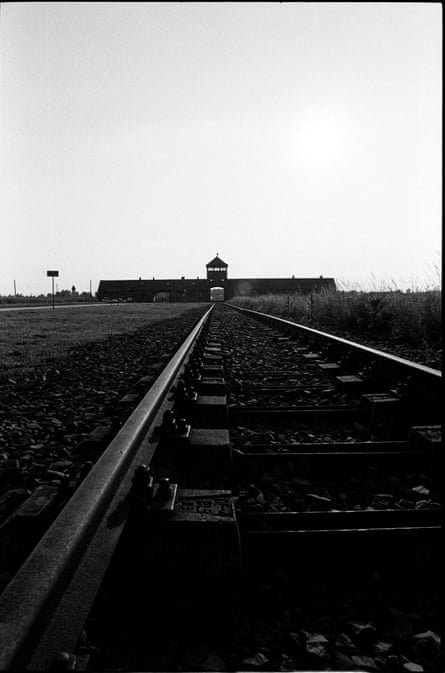
Marriage was only allowed to the racially approved, armed with their certificates of “Aryan” ancestry. Modernist art was condemned as “degenerate” because Hitler thought it was part of a worldwide conspiracy of Jews hellbent on destroying German culture. “Asocial” Germans, alcoholics, petty criminals, vagrants, mixed-race Germans, the “work-shy”, were forcibly sterilised lest they pass on their alleged defects to the next generation. Homosexuals were killed because they were a danger to the Aryan race, supposedly compromising its virility. Gypsies were slaughtered because the Nazis thought they carried a hereditary taint of criminality. The official wartime “General Plan for the East” envisaged the deliberate extermination through starvation and disease of up to 45 million Slavic inhabitants of Eastern Europe following a Nazi victory, to make way for German settlers. This was genocide planned on an almost unimaginable scale.
And then there’s the fact that the Nazis came to power in a modern European society, a society of great cities, classic buildings, bustling urban streets; economically advanced, technologically sophisticated and culturally literate, the land of Bach, Beethoven and Brahms, of Richard Strauss, of Thomas Mann and Bertolt Brecht, of Goethe and Schiller, Caspar David Friedrich and the modernist artists of Die Brücke (the Bridge) and Der Blaue Reiter (the Blue Rider). The Nazis and those who served them were wedded to modern technology, racing cars, motorways, cinema, TV, rockets, jet-propelled planes – even the atom bomb, though they never succeeded in their attempts to build one. This makes it all the more easy to imagine ourselves in their situation and wonder what we might have done in the Third Reich had we been there.
Nazism, the society it created, the world of the Third Reich and the people who lived through it all appear as a kind of moral drama where the issues are laid out starkly before us with a clarity we are no longer able to achieve in the morally complex, confusing and compromised world we live in today. It has become commonplace to classify the inhabitants of Nazi Germany and the countries it conquered and occupied as “perpetrators”, “victims” or “bystanders”, as if the Third Reich was one single, gigantic act of criminality to be retrospectively judged as if history were a court of law. Occasionally we might nod in the direction of the few who resisted, but their numbers shrink into insignificance in comparison with those considered guilty or innocent, the actively criminal and their passive victims.
Yet we have not always approached the history of nazism in this way. Indeed, the predominantly moral perspective from which Hitler and the Germany he created are currently viewed is a relatively recent one. For a long time after the end of the war he launched in September 1939 and lost five and a half years later, Hitler was a comparatively neglected topic for historians, as were the Nazi movement and the Nazi state. Evidence was piled up for the Nuremberg trials, but the focus was very much on “war crimes”, the years before 1939 were more or less out of the visual range of the prosecutors, and the death camps at Treblinka, Auschwitz and elsewhere were not the central point of the investigation.
The trials were quickly forgotten, at least for the time being. In Germany, a kind of collective amnesia followed, undermined only by resentment at the trials themselves, the intrusive process of “denazification”, the brutal expulsion of 12 million ethnic Germans from Eastern Europe at the end of the war and the mass bombing of German cities in its later stages. In the countries formerly occupied by Nazi Germany, such as France, people wanted to remember the resistance. In the Eastern bloc, communist governments celebrated (and exaggerated) the role of communist resisters but preferred to try to integrate ex-Nazis into the new society they were building rather than come to a reckoning with their crimes. In Britain, people remembered the war, the stoicism of the population during the blitz and the achievements of the British armed forces, but not much besides.
It wasn’t until the late 1960s that things began to change. For Germans, the key question was how and why the Nazis had come to power. The Federal Republic, with its capital in the Rhenish university town of Bonn, had gained legitimacy through the “economic miracle” of the 1950s, but was still not much older than Germany’s first democracy, the Weimar Republic, had been when it had given way to Hitler’s Third Reich. People asked nervously “Is Bonn Weimar?” Political scientists and historians examined the reasons for the vulnerability of Weimar’s institutions and found, reassuringly, that the answer was “No”.
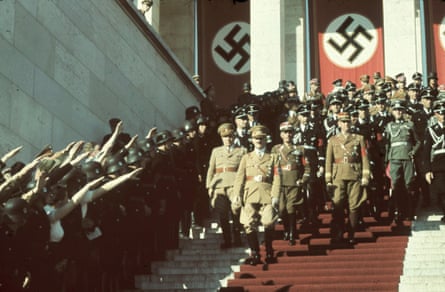
By the 1970s, social history had arrived on the scene. Nazi documents had become available in large quantities, a younger generation of West German historians began work on them, and research students in Britain and America travelled to Germany to take advantage of their release. The focus turned towards how “ordinary” Germans behaved in everyday life, how far they had supported the regime, how far they had opposed it. Unsurprisingly, research uncovered a huge variety of responses, ranging from fanatical enthusiasm to underground opposition, mostly by former communists and social democrats.
The pioneer of this approach in Germany, Martin Broszat, director of the Munich-based Institute of Contemporary History, led a massive project whose report, published in six stout volumes, showed that most Germans had complied with the regime in many respects, but resisted when it impinged on their deepest beliefs, notably in the area of religion. A lot of ordinary people grumbled about their standard of living, were pessimistic about the war, criticised the corruption of leading Nazis and were generally less than enthusiastic about the way things were going, above all when the economy was in the doldrums, as in 1935, or when the war started going badly, from early 1943 onwards. But Hitler held their allegiance almost to the end.
For the historians of the 1970s and 1980s, and not just in Germany itself, it was important to remain as objective as possible, particularly in view of the political bias and right-wing parti pris of the older tradition of historical writing that had led German historians to sympathise with the Nazis and then, after the war, to try to argue that their ideas were not really German, or that the fall of the Weimar Republic was caused by the allies’ hardline treatment of defeated Germany at the Treaty of Versailles. Nazi Germany was portrayed as a country under the occupation of a small group of gangsters from whom the great majority of people had remained detached. For the younger generation of historians, social science theory and methods would help generate a less one‑sided and more truthful picture of the Third Reich.
Thus nazism had to be treated like any other historical phenomenon, using the methods of modern historical scholarship and eschewing moral judgment and condemnation. In advocating this view, Broszat was building on his experience and that of his colleagues in providing expert reports to the trials of Nazi war criminals, notably the 1964 Auschwitz trials, in which the Munich Institute supplied affidavits on issues such as whether the SS camp guards were forced to choose between committing atrocities and facing a court martial for disobedience, or how the concentration camps had been established and how they were run.
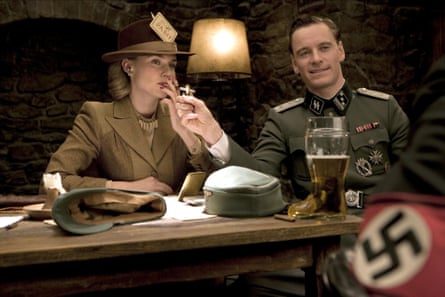
But this cool approach, which Broszat termed the “historicisation” of the Third Reich, ran into criticism from the Israeli historian Saul Friedländer, who argued that it was simply wrong to treat Nazi Germany in the same way as 16th-century France or medieval Italy. The crimes of the Nazis were so extraordinary, so extreme that to historicise the Third Reich in this way was to miss the centrality of antisemitism and the extermination of the Jews to Hitler and the Nazis. The younger historians of the 1970s and 1980s concentrated on issues such as the complicity of German elites in the rise and triumph of nazism, and the long-term roots of the Third Reich in the social and political history of 19th-century Germany. But to do so, charged Friedländer, was to smooth over the chasm that separated Nazi Germany from any kind of normal historical era.
Friedländer’s parents had both been gassed in Auschwitz, and he himself went on to write a major, two-volume study of Nazi Germany and the Jews (published in 1997 and 2007) that movingly brought together individual stories of the persecuted and the murdered with a detailed account of the larger picture of antisemitic policy and its implementation. It fulfilled all the requirements of modern historical scholarship while at the same time conveying a close sense of identification with the victims who were its principal subjects.
Yet by the time it appeared, the whole historical landscape had changed. During the 1990s, the generation of Germans who had entered the legal, medical and other professions under the Third Reich had retired, giving way to younger people, who had nothing to hide. A stream of historical studies implicated judges and lawyers in the unjust trial and execution of thousands of ordinary people who had done no more than criticise the regime. The close involvement of the medical profession in the murder by gassing and lethal injection of people who were mentally ill or disabled was uncovered and brought to public attention. A travelling exhibition of photographs documented the atrocities committed by regular German armed forces on the eastern front, which sparked demonstrations in Munich and calls for its withdrawal. Critics discovered some inaccuracies in its presentation, but these were quickly removed and did not undermine the exhibition’s message.
A leftwing foreign minister, Joschka Fischer, angered at the anodyne obituaries of retired diplomats that glossed over or suppressed their activities during the Hitler years, commissioned a large-scale investigation by professional historians that showed in detail how closely diplomats had been involved in the central crime of the Third Reich: the arrest of Jews in the countries occupied by the Nazis, their deportation and their murder in Auschwitz. Under pressure from American public opinion in particular, major German companies who had investments at stake across the Atlantic commissioned historians to research and write about their role in the Nazi economy, their use of slave labour under degrading and often murderous conditions, their exploitation of the gold fillings extracted from the bodies of Jews gassed at Auschwitz and other crimes.
Certainly, there were, and continue to be, attempts to cover this up, most recently in the official history published to mark the bicentenary of the iron, steel and arms firm Krupp in 2011, which does not deal adequately with the company’s brutal treatment of the slave labourers it employed during the war and glosses over many other aspects of the darker side of its past. But on the whole, at least recently, German business has wanted to advertise its open and honest approach to its involvement in the crimes of nazism, in order to demonstrate its moral disapproval and distance itself from it.
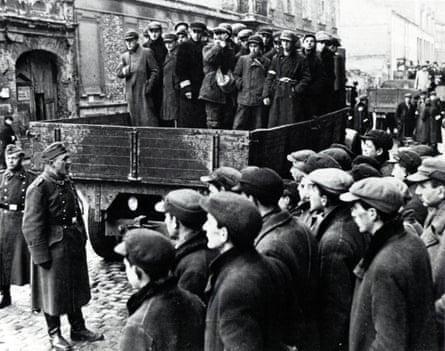
Such work has been fuelled by a strong moral drive that has drawn its power from a number of sources. The fall of the Berlin Wall and the collapse of communism in 1989 opened the way to a flood of compensation claims by people who had fled communist East Germany after 1949 and now wanted their property back. A good number of them had been Nazis, of course, and these claims prompted former slave labourers in Eastern Europe to demand compensation for their suffering. And many Jewish families whose property, especially their art collections, had been requisitioned or looted by the Nazis now began to file claims for their return as well.
By the turn of the century, a large international conference held in Washington DC had laid down some ground rules for dealing with these claims, and individual states were beginning to set up their own specialist bodies in the field, starting with the UK’s spoliation advisory panel, which advises on cultural objects in British museums and galleries that were looted during the Nazi era. As the issue gains publicity, aided by movies such as George Clooney’s The Monuments Men (2014), and as more museums and galleries put up lists of works of uncertain provenance in their possession on their websites, the number of claims is increasing. Last October the panel recommended the return of a large and elaborately ornamented 16th-century saltcellar from the Ashmolean Museum to its original owners, a family of Jewish collectors in Hamburg who were deprived of it by the Nazis. More claims are in the pipeline.
The 1990s was the era when the memory of the Holocaust, as it had now come to be known, entered the mainstream of European and American culture, with memorial museums set up in numerous cities across the US, including Washington, and a permanent Holocaust exhibition installed at London’s Imperial War Museum. Hollywood played its part in this process with movies such as Steven Spielberg’s Schindler’s List (1993). Former camp prisoners and survivors began to publish their memoirs after decades of silence. In the UK, the Holocaust Educational Trust, founded in 1988, sought to make school students aware of the Nazi extermination of European Jews.
Since the turn of the century, these developments have had a major influence on how historians approach the Nazi past. In a sense, Friedländer has won the debate he conducted with Broszat in the 1980s. It is now almost impossible to write about the Third Reich in the years of its existence, 1933–45, without also writing about its legacy in the present day and recent past. Partly this reflects the fact that historians’ attention has been turned for some time towards the postwar years in Germany, with the gradual release of documents under the 30-year access rule. A large amount of evidence has been uncovered of the survival into the postwar decades, often in positions of power and influence, of former active Nazis responsible for crimes of many kinds. The rise of “memory studies” has fed into this development. History has become intertwined with memory, and the idea that one should write about the Third Reich in the same way as one would write about 16th‑century France is no longer very widely shared.
Often the postwar transformation of memory took on strange forms, as in the appropriation by Mexicans of the Volkswagen Beetle, originally the Nazi “Strength Through Joy” car, as a national icon in the late 20th century; painted yellow, the vochito, as it is known, is still widely used as a taxi. The Beetle is also a German national icon, the symbol of the 50s economic miracle, with the company manufacturing a “New Beetle”: an example of postmodern retro-chic. Owners of the original cars hold conventions on the old grounds of the Nuremberg rallies, seemingly oblivious of, or indifferent to, the car’s Nazi origins.
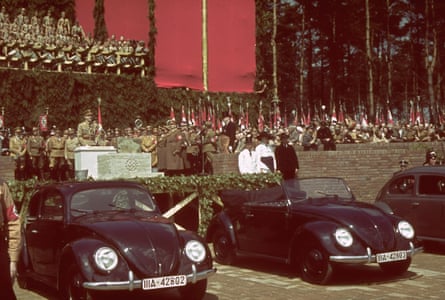
But more generally, in recent years, memory has trumped amnesia. This has its own problems. In some instances the emotional need to confront the misdeeds of nazism and expose the complicity and guilt of those who participated in them has led to crude and sweeping condemnation where historians should be making careful distinctions. The discovery of a wealthy businessman’s postwar concealment of his activities in the Third Reich, for example, has led to massive exaggerations about his implication in the worst crimes of the regime. Like many fellow travellers, he went along with the regime from start to finish, but a closer look at his inglorious career fails to reveal any instances of using slave labour, manufacturing arms, supplying materials to cover up mass murder or uttering a single word of an antisemitic nature. Losing one’s moral compass is not the same as setting it to mass murder. Similarly, the revelation, after decades of careful cover-ups, of the role professional diplomats played in the development of Nazi foreign policy has led to unsupported accusations that they actually drove on the extermination of the Jews rather than merely facilitating it (bad enough in itself, but not the same thing, and a contention that implicitly lets the real guilty parties off the hook).
An increasing amount of historical writing over the past decade and a half has sought to argue that the overwhelming majority of ordinary Germans supported the Nazis from the very beginning, that the Nazi seizure of power in 1933 was carried out without any violence except against despised minorities, that Hitler really did succeed in moulding all Germans together in an acclamatory “national people’s community”: so all are guilty.
But it is not excusing the choices they made to point out that there was, in fact, massive violence visited upon nazism’s opponents, above all but far from exclusively in the communist and social democratic parties, as Hitler created his dictatorship, with 100,000 imprisoned in concentration camps, bullied, beaten, tortured and – in at least 600 cases and probably many more – brutally murdered. The Third Reich was, after all, a dictatorship in which dissent, even at the level of telling jokes about Hitler, could be punishable by death. The time has come to remember that Nazi Germany actually was a dictatorship in which civil rights and freedoms were suppressed and opponents of the regime were not tolerated. Repression was carried out not just against social outsiders but also against whole huge swaths of the working classes and their political representatives. Just because people had to exercise their moral choices within such constraints does not mean they had no moral choices at all, or that they were not responsible for the ones they made. Similarly, just because people rendered the Hitler salute in public did not mean that they believed in the regime in private.
Sweeping generalisations about “the Germans” are out of place both in serious historical scholarship and in an informed public memory. Wartime propaganda damned all Germans past and present for the rise of nazism and the murderous triumph of antisemitism, but nazism, it should not be forgotten, was a tiny fringe movement until the very end of the 1920s. The regime had to work hard to get popular support once it came to power in 1933, and violence played as important a role as propaganda. Prominent Jews in the Weimar Republic, notably the foreign minister Walther Rathenau, were not despised, marginal figures but enjoyed huge popular support and admiration, expressed in the national outpouring of grief on his death.
It has become increasingly difficult to sustain the view, rooted in wartime allied propaganda and given more sophisticated expression in the work of the dominant school of left-liberal West Germans of the 1970s to 1990s, that the roots of nazism lay deep in the German past. Often seen against the long-term background of modern German history since the era of Bismarck’s unification of the country in the 19th century, the Third Reich is now increasingly also viewed in a broader international, even global context, as part of the age of imperialism, its drive for domination building on a broader tradition of the German quest for empire.

Nazi policies in Eastern Europe drew heavily on Hitler’s image of the American colonisation of the Great Plains, derived from the prewar pulp-fiction writer Karl May. Hitler’s murderous quest to found a new German empire focused on Europe rather than Africa or Asia, but it drew on many legacies of the age of European imperialism, above all its doctrines of racial superiority. A handful of Englishmen, Hitler said more than once, had been able to rule millions in India; surely the Germans could do the same in Eastern Europe. That the British Raj was ruled indirectly, through the structures of Indian society, did not occur to him; he put it all down to the supposed racial superiority of the rulers.
In the new, transnational vision that has emerged among historians in our own era of globalisation, nazism appears as an ideology drawing on sources from many countries, from Russia to France, Italy to Turkey, rather than being the culmination of exclusively German intellectual traditions, as the historians of the postwar generation argued. Racial doctrines borrowed from the French theorist Arthur de Gobineau were married to a distorted version of social Darwinism originating in Britain, antisemitism derived from Russian and French writers was fused with anti-Bolshevism imported from the Whites in the Russian civil war, the worship of violence and hatred of parliamentarism taken from Mussolini’s Italian fascist movement were joined to ideas of national reawakening taken from Kemal Atatürk’s nationalist revolution in Turkey.
Following this trend, historians have come to see the Nazi extermination of the Jews not as a unique historical event but as a genocide with parallels in other countries and at other times, not only the German extermination of the Herero tribe in the Kaiser’s colony of Namibia before the first world war, but the actions of the Turks in 1915, of Stalin in Ukraine in the early 1930s and of the Hutus in Rwanda, to name only three of the mass murders of the 20th century.
Yet while such comparisons can add to our knowledge and understanding of what Hitler and the Nazis did, they can also blur distinctions by homogenising all acts of mass murder until it is impossible to tell them apart. Only in Germany did the eclectic hotchpotch of European ideas that formed the ideology of National Socialism rise, triumph and put itself into practice. And the genocide it inspired was different from other genocides: for Hitler, the Jews were not merely subhumans to be eliminated in the interests of an allegedly superior race, they were the “world enemy” of the “Aryans”, endowed with almost superhuman qualities, to be hunted down and ritually humiliated wherever they were found before they were killed without exception. That is why modern neo-Nazis find it so important to deny the atrocities of Auschwitz, and that is the reason above all others why the Nazis linger so powerfully and persistently in our collective memory.
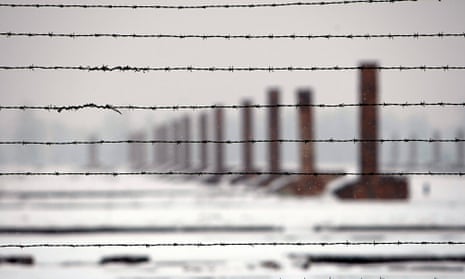
Comments (…)
Sign in or create your Guardian account to join the discussion